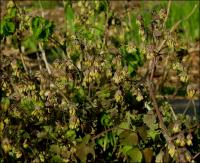Description
ARCHIVED
Note: This is a plant not currently for sale. This is an archive page preserved for informational use.
Hanging chartreuse blooms dangle from the stems in spring
Chartreuse blooms in spring
ARCHIVED
Note: This is a plant not currently for sale. This is an archive page preserved for informational use.
Hanging chartreuse blooms dangle from the stems in spring
ARCHIVED
Note: This is a plant not currently for sale. This is an archive page preserved for informational use.
Sunshine colored saucers with orange centers in early summer
Size: 24” x 24”
Care: sun in well-drained soil
Native: Nepal, China, Pakistan & Afghanastan
Potentilla is Latin meaning powerful referring to medicinal properties. Argyrophylla means silver leaved. Potentillas used by dentists in the 16th century to reduce pain according to Gerard, English herbalist. Per Culpepper, 17th century English herbalist potentilla is to be used if Jupiter is ascending and the moon is “applying to him.” This species collected by 1831.
ARCHIVED
Note: This is a plant not currently for sale. This is an archive page preserved for informational use.
Large, nodding flower heads with recurved petals white, glowing pinkish in August, fragrant.
Size: 3-4’ x 12”
Care: Sun to part shade in moist, acidic soil
Lilium was named for the Greek word for smooth, polished referring to its leaves. This species introduced to Europe by Carl Peter von Thunberg around 1777. Von Thunberg (1743-1828), student of Linnaeus at Uppsala University in Sweden. He made three trips to the Cape of Good Hope 1772-1775 where he collected about 1000 new species, Java and Ceylon (Sri Lanka) 1777 and 15 months in Japan (1775-1777) where he befriended local doctors who gave him hundreds of plants new to Western horticulture. He succeeded Linnaeus as professor of medicine and botany at Uppsala. Knighted by Swedish King Gustav. Grown at America’s 1st botanic garden, Elgin Botanic Garden 1811. L.H. Bailey (1935) highly recommended this lily as “(o)ne of the most beautiful and satisfactory of all lilies, robust, permanent (and) easily grown…”
ARCHIVED
Note: This is a plant not currently for sale. This is an archive page preserved for informational use.
Profuse golden yellow flowers from July through fall, slow to emerge in spring so don’t prematurely assume it’s gone. Very sweet yellow blooms over long period of time.
Size: 4-6”x 12-15”
Care: full sun in well-drained soil
Native: Colorado & Kansas south to SW U.S.
The name Zinnia honors German botany professor Johann Gottfried Zinn (1727-1759). This species 1st collected by Edwin James, physician and botanist on the Long Expedition in 1820.
ARCHIVED
Note: This is a plant not currently for sale. This is an archive page preserved for informational use.
Dainty (appearing but actually tough) pink daisies with yellow centers from summer through autumn, very long blooming. Wonderful for rock gardens, groundcover or front of border.
Size: 12” x 12” spreading
Care: full sun in well-drained soil. Slow to emerge in spring.
Native: Eastern No. America
Coreopsis is Greek meaning “buglike” referring to the seeds looking like little black bugs. Thomas Nuttall 1st collected this flower in 1815 about 20 miles NW of Savannah along the river. He described its native habitat: “in open grassy swamps from New Jersey to Georgia…” William Robinson, father of the mixed perennial border called this “a neat and pretty plant.” In 1913 Sanders wrote that it “make(s) a brilliant display of color (when) grown in masses in sunny borders.”

